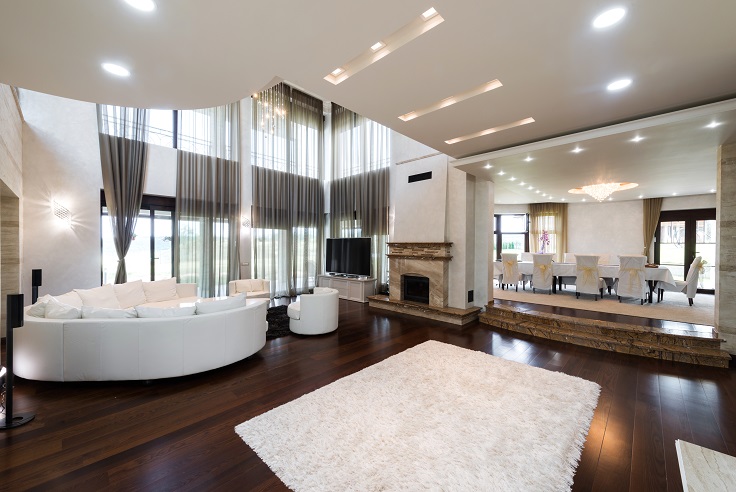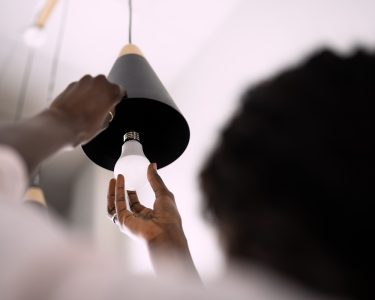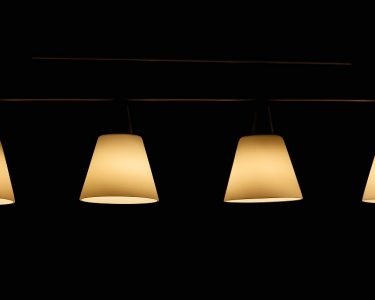Interior lighting is an element that people often overlook. Nevertheless, it has the power to make or break your interior design. In addition to making it easier to navigate through rooms and perform basic tasks, lighting can affect your mood and the perceived size of your space. It can also emphasize or soften the colors in a room, thereby changing the atmosphere.
Efficient lighting design incorporates the best elements of both artificial and natural light. Using different types of lighting such as task, accent, and ambient will highlight important elements of indoor spaces. For this reason, we’ve put together some lighting design techniques and tips to help you illuminate the different rooms in your house.
Kitchen Lighting
It goes without saying that you need adequate kitchen lighting. While most of the lighting should be task-oriented, you still need to balance it out with some ambient lighting. Having lights pointing downward onto work surfaces will make it easier to cut and prepare food. You can also try pendant lights above an island table. Undercabinet lighting will also add functionality to the space.
Once you take care of your task lighting, mix in some ambient lighting to combine aesthetics with functionality. Recessed lighting in the ceiling or lighting above open kitchen shelves can go a long way to achieving this kind of balance. Dimmers are also helpful for recessed lighting, so you can adjust the amount of light in your kitchen.
Bathroom Lighting
When designing bathroom lighting, keep in mind that this is the space where you get ready in the morning. In other words, there needs to be sufficient lighting to complete your daily routines. Clearly, proper lighting makes all the difference in this room.
One of the best ways to enhance bathroom lighting is to put lights on both sides of your mirror to reduce the number of shadows created. Integrating lighting in mirrors is helpful because it makes your skin look better. Essentially, bathroom lighting is all about illuminating the face properly.
Other nice touches include accent lighting above the tub for a warming glow and lighting underneath base cabinets to light up the space in the evening.
Dining Room Lighting
Since the dining room is where you will share important family meal and host dinner parties, lighting design is crucial for this space. Generally, your design strategy should revolve around the centerpiece, the dining room table. A chandelier or pendant light is a nice statement, but you don’t have to limit your lighting to this fixture.
Track lighting, wall sconces, or recessed lighting can provide extra lighting that works well in dining spaces. Dimmers are a must because they can set the mood and allow you to control the amount of light you’re getting.
Living Room Lighting
Unlike other rooms in your house, the living room can be used for different purposes. Therefore, you really need to consider how you will use this space when designing the lighting. It will vary depending on whether you use it to read, entertain guests, or watch television.
A combination of overhead lighting with an assortment of table and floor lamps should do the trick. If you put in an overhead fixture or recessed lighting, it needs to be dimmable to accommodate different activities. It also helps to incorporate natural light in the living room. Opening drapes or shades to let in daylight will brighten the space during the day and save energy as well.
Bedroom Lighting
Bedroom lighting is all about creating a warm and relaxing atmosphere. As a result, you should focus on soft, ambient lighting. Bedside lamps and wall sconces with dimmers will set the perfect mood for the end of the day. You can still add a beautiful ceiling light fixture along to these other lighting options.
As soon as you’ve figured out the lighting scheme you want for each room, try using different types of lighting to bring out your home’s architectural features. If used correctly, interior lighting can make a dramatic impact on any room. Indeed, it can transform a cold, uninviting space to a warm and welcoming area in which people will want to spend more time. The key is to choose lighting fixtures that will match the style and function of your interior while enhancing the overall atmosphere of your home.





